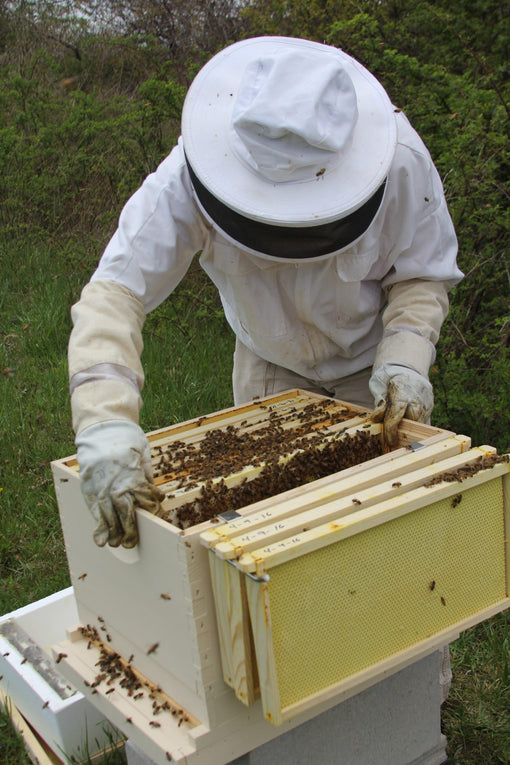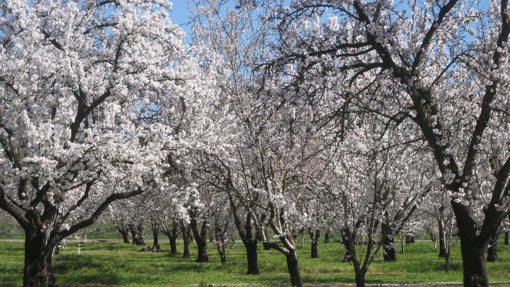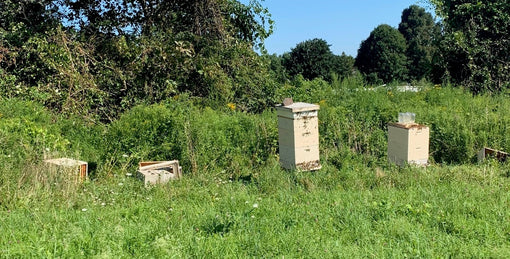
- Article published at:
- Article author: Web Dev
- Article tag: honey bee facts
- Article comments count: 0
When our customers learn that Little Bee of Connecticut has their own honey bee hives, they become curious and want to know what’s involved. One of the most frequently asked questions is: How do you start a new hive?
We posted a small series of videos a few weeks back which highlighted the steps we’re about to explain in more detail. If you’re more of a visual person, you can check out those videos on Instagram or Facebook. Read on for more detail on this exciting process!
When we want to add more honeybee colonies to our apiary, there are a few different ways we can obtain bees for a new hive. We can try to catch a swarm in the wild, however, that is like fishing, you never know if you’ll catch anything. If you have existing hives, you can also split a large hive into two hives. Doing this can help prevent swarming, which can happen when larger hives get overcrowded. However, one of the simplest and most common methods is to purchase a package of bees.
A 3-lb. package of bees = 10,000 bees!
A package of bees is just what it sounds like. A box filled with bees. Approximately 10,000 bees and one queen, to be specific. These are available each spring from many commercial beekeepers or beekeeping supply companies. They will even ship them through the mail just like any other package. (Hopefully your mail carrier isn’t allergic.!)
Once the bees arrive, they need to be placed in the hive as soon as possible. Being stuck in a small room for a couple days with 10,000 of your brothers and sisters and no bathroom would make you cranky too.
The first thing we have to do is remove the “feeder can” and locate the “queen cage”. A feeder can contains sugar syrup to feed the bees while they are being shipped to their final destination. The queen cage separates the queen from the rest of the bees. This queen is not the mother of this package of 10,000 bees. She was raised separately and the cage protects her from the bees for a couple days until they become familiar with her pheromone and accept her as their queen.
Removing the feeder can
The Queen Cage
To get the bees into the new hive, we start by suspending the queen cage between two frames. This ensures ample space for the bees to cluster and allows the queen’s pheromones to fill the hive. Next, we pour the bees from the package directly into the hive. This is an amazing visual, so head over to our Instagram or Facebook pages to see the process. Scroll back a few weeks to find the series.
With the bees now in the hive, they will be attracted to the queen’s scent. Over the next couple days, the bees will chew through the sugar plug on the end of the small queen cage to allow the queen to be released. She will then start her only job, which is laying approximately 1,500 eggs per day. A mother’s work is never done, right??
It’s now time to close up the hive, but before we do, we want to leave some food sources with them to provide extra nourishment until they can venture out and visit the many pollinator gardens and pathways in our town. A sugar syrup with essential oils is provided as a nectar substitute. Pollen patties, which look like a protein bar for a bee provide a healthy protein substitute. The bees will feed on this along with nectar and pollen sources found in the open for the next few weeks as they get settled in.
The last step is to return to the hive about a week later to perform our first inspection. During this inspection we want to look for several things. First and foremost, we’ll inspect and remove the cage to make sure that the queen has been released. We don’t necessarily need to see the queen, we just want to know she’s out of the cage. Second, we want to make sure that the worker bees are building honeycomb, which is what the queen will use to store her eggs as she lays then and will also be used for honey storage. If the sugar syrup is depleted, we’ll add more to the feeder at this time. Finally, we want to look for eggs and small larvae in the comb. Finding the queen in a hive is like playing “Where’s Waldo”, so trying to find her every time can be frustrating. You could injure her if you don’t know where she is on a frame. If we see eggs and larvae during an inspection, we know the queen is there and that’s a good sign that she is healthy and active. The new hive is now up and running!
Young honeybee larvae
We check back every few weeks to see how the hive is doing and to check again on all the things we outlined above. We had some very chilly weather right after we installed our new hives and the bees were a bit slower than typical in building up their stores of honey. However, we’re hopeful that we’ll have a sweet honey harvest in early summer at some point. Maybe a few weeks later than usual, but we’ll keep you posted on our social media accounts, so be sure to follow us there!
If you have any questions on this blog post or simply want to share a story of your own, feel free to reach out to us at info@littlebeeofct.com. We’d BEE very excited to chat!
Also, to see all of the products we create with all-natural beeswax and honey, visit our site. Thank you for supporting Little Bee of CT and the beekeepers around the world!
Learn More


